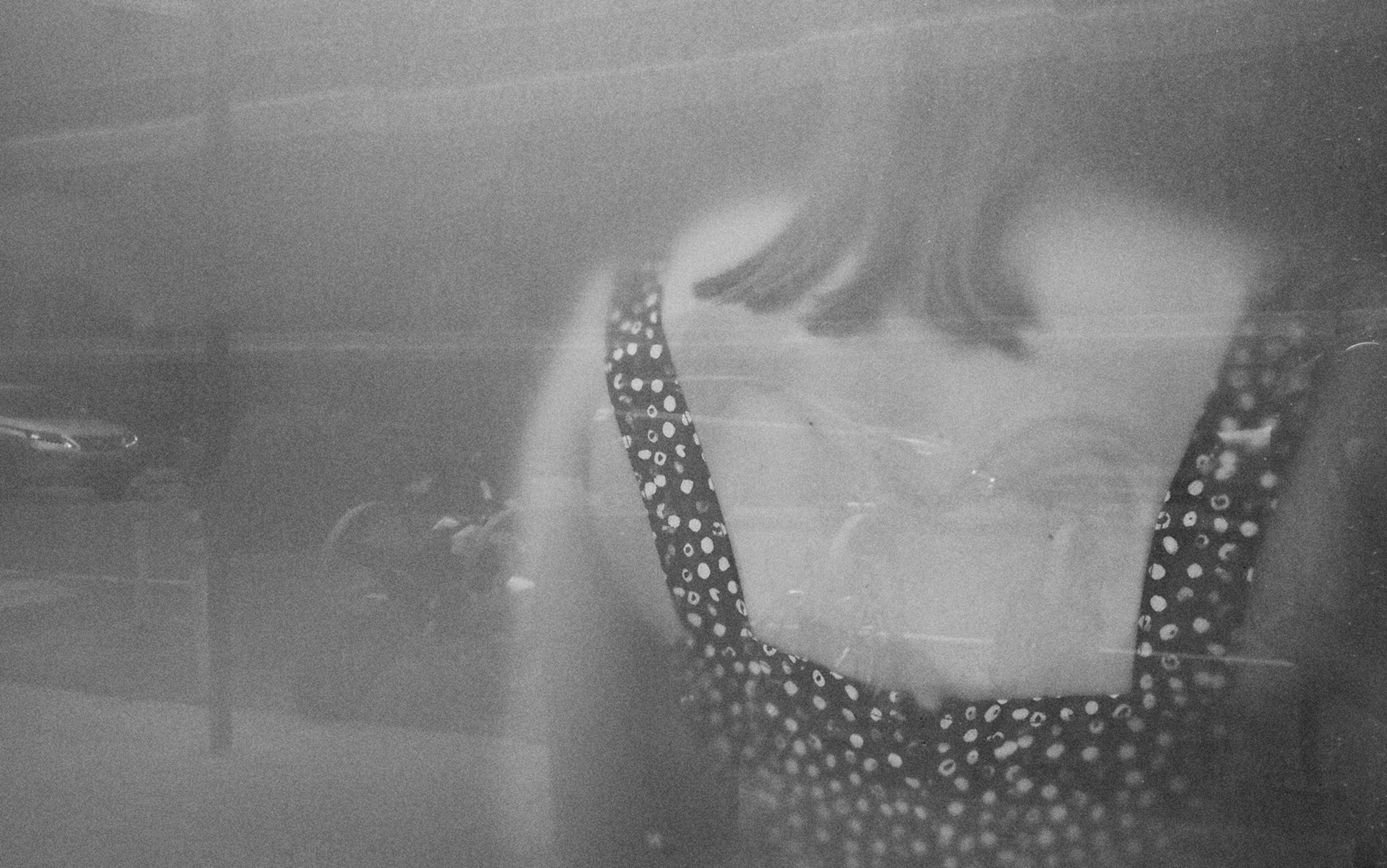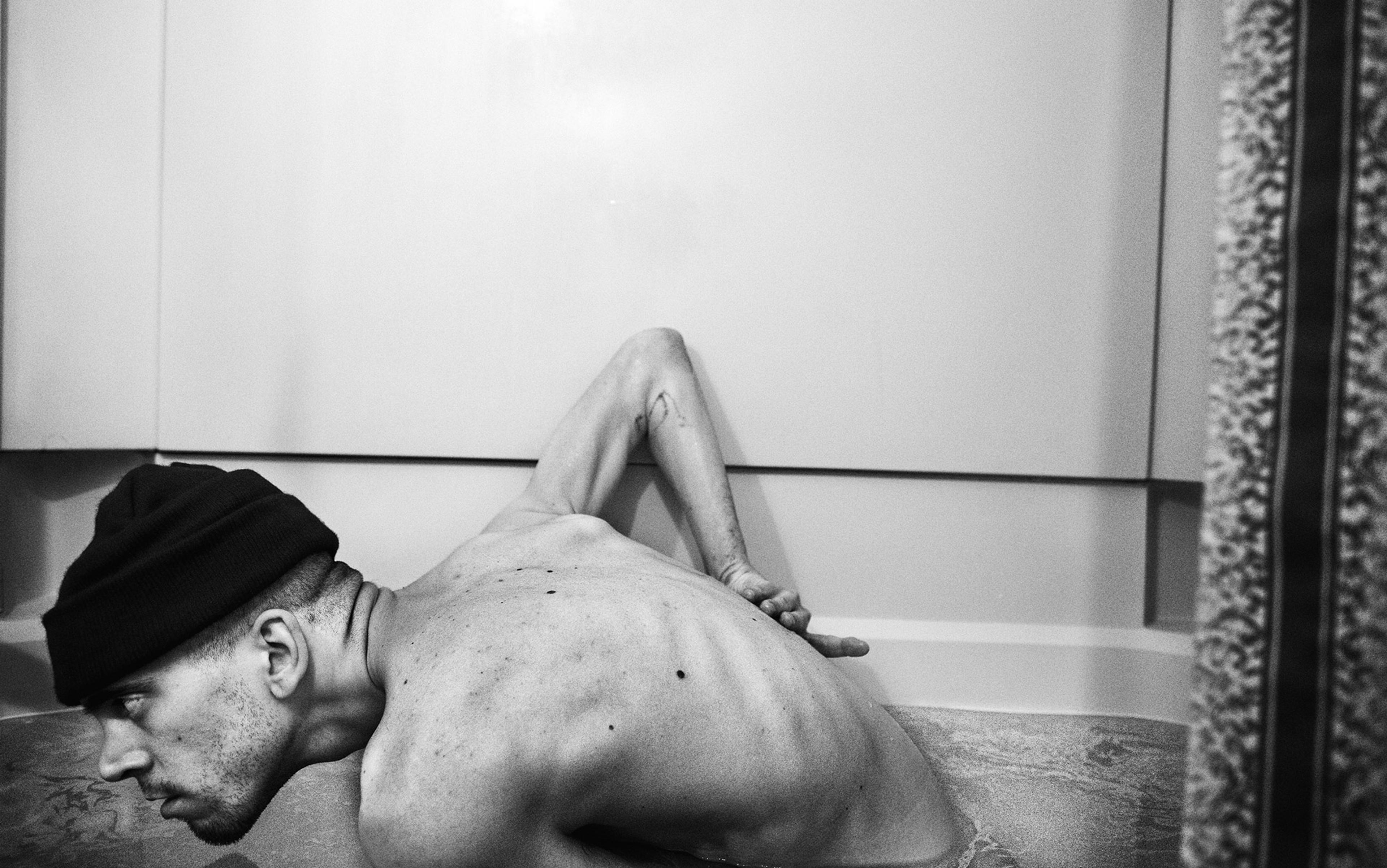Do you consider yourself to be a disabled person?
Yes: ☐ No: ☐ Prefer not to say: ☐
Yes. Because forms like this – and questions like this – always throw me into confusion, and sometimes into complete mind-stoppage. You appear to be asking a closed question, but ‘consider’ is a word I would use to open up a question. Forms are full of such questions, presenting themselves as straightforward logic gates, which on closer inspection turn out to be impossibly multivalent. Rather like everyday speech. You haven’t been specific enough, so I’ll just have to throw everything at you – at least then some of it will be what you’re looking for.
Yes. Because I have a diagnosis of autistic spectrum disorder (ASD), and that comes under the broad spectrum of conditions that are recognised as disabilities. If this form is part of a process that requires documentation, I can provide a copy of a detailed report by the psychologist from Britain’s free National Health Service who diagnosed me.
No. Because for the 42 of my 50 years that preceded my diagnosis, I was, as far as I knew, non-disabled, and it’s hard to shed such a well-established assumption about myself. For most of my life, I’ve been used to thinking of disabled people in the mainstream way – that is, in the third person. When I tick ‘yes’, I still can’t quite believe it. Even after eight years of paying close attention to disability scholarship and activism, when I picture disability, my mind still defaults to the stock images: the wheelchair symbol, the guide dog, the white stick, the prosthetic limb, the accessible toilet.
When I read the book Disability Theory (2008) by Tobin Siebers, I recognised that the representations to which my mind defaults are not direct representations of disabled people or their bodies, but metonymic representations – where the paraphernalia associated with disabled comes to stand for the people who use them. The disabled people whose paraphernalia is not so readily visible (the shunt, the stent, the colostomy bag, the anti-seizure or anti-inflammatory drugs, the blood-sugar monitors etc) cannot even offer any symbols to stand as proxies.
I’m thinking about one of those default images now: the painted wheelchair symbol that marks out a disabled parking space at a supermarket car park, and the figure on that wheelchair. The stick person appears fused to the wheelchair, suggesting not just that a disabled person can be only a person who uses a wheelchair, but is someone who cannot be separated from it.
The wheelchair stick-figure seems to me to stand for a set of commonly held, largely unexamined beliefs about disability that go beyond the medical or naturalistic models used by clinicians, and usefully outlined by the philosopher Robert Chapman in the recent Routledge collection Neurodiversity Studies (2020). All the medical model requires is evidence of a body or a mind, which in form, function or both deviates from the statistical norm in a way that harms the disabled individual and puts them at a relative disadvantage. That stick person, fused to their chair, denuded of all other distinguishing characteristics, does quite a lot more. It equates disability with mobility impairment, yet it also suggests that a disabled person is one who is:
i) disabled to the same degree in the same way at all times and in all contexts
ii) nothing but their disability
A disabled person is always and only disabled.
Inside every Yes box is a flat, painted wheelchair stick-figure, asking me what I’m doing in their parking space.
No. Because, as the wheelchair-stick-figure implicitly seems to ask, why would anyone want to occupy a disabled space if they had a choice? Isn’t it better, if you can, to sneak out of it in able-bodied disguise, and pass for non-disabled? Why would you want to identify with an unheard, underdrawn wheelchair stick-figure, stuck helplessly to the tarmac, walked over and parked on and generally ignored? Why would you want to be the person who other people are grateful not to be? Why would you want to identify as one of The Most Vulnerable In Our Society – the group that exists to be rhetorically useful to politicians and campaigners, but who are rarely the main topic of speech, and always assumed to be unable to speak for themselves?
Why would you want to own up to an ‘underlying condition’ that apparently makes your death from unrelated causes less regrettable than someone else’s?
Why would you volunteer to be written off?
Why would you volunteer to be pitied?
Well, in that case, Prefer not to say.
I had naively thought that diagnosis would lead to lightening of the burden of social labour
Prefer not to say. Because although, on paper, the purpose of saying Yes is to access the support I require (which I am legally entitled to as a documented disabled person) and also to spare me the debilitating labour involved in passing for non-disabled, in practice it tends to mean swapping one kind of labour for another. This is the labour involved in accounting for the difference between what people believe about autistic people and what they believe they are seeing in me.
Like many autistic people – particularly those who, like me, have gone through most of our lives knowing that we were different but not knowing why – I have absorbed the lesson that it is safer to pass if one possibly can, and I’ve grown accustomed to putting in a great deal of exhausting effort in order to do so, with the result that if I disclose my autism I am often met with comments such as:
‘I would never have known.’
‘But you don’t look autistic.’
‘But you make eye contact.’
‘But I don’t find you hard to get on with.’
‘But you’re nothing like my son/sister/cousin/clients/pupils…’
Even the person who assessed me for Disabled Students’ Allowances a few years ago felt the need to point out that I ‘wasn’t like most of the people’ they saw. They also expressed surprise that I’d completed my first degree, commenting: ‘I would have expected someone with your profile to have dropped out.’
Then there was the fundraiser who phoned me on behalf of an autism charity I’d supported, to ask if I would increase my regular donation. After we’d been talking for several minutes, she asked what my connection to autism was, perhaps expecting something like ‘I have a child who…’ or ‘a brother who…’ or ‘I work with…’, because when I disclosed that the autistic person concerned was the one she was talking to, I could feel her shock down the line as she said: ‘Well, you are obviously managing OK, but as you know, there are many other autistic people who…’
On both occasions, I felt like apologising. I had naively thought that diagnosis would lead to lightening of the burden of social labour; instead, I seemed to have replaced the labour involved in passing for non-disabled with the labour of dealing with other people’s discomfort when I chose not to pass.
Prefer not to say. Because people aren’t just surprised or uncomfortable, but often actively suspicious. In the cultural imagination, a claim of disability is a demand for something – extra effort, extra attention, extra resources; or for something special – special treatment, special favours, special dispensations. To be disabled is to put other people to more than ordinary trouble.
The legislation around disability is based on the principle that what is being asked for is no more than the reasonable adjustments required to allow the disabled person to live, work and learn on the same terms as anyone else. It is supposed to be about ensuring equality, not bestowing scarce and unearned social goods. In practice, though, disabled needs are treated as ‘special’, and the support is offered as ‘additional’. Special, additional and, from a capitalist point of view, a poor investment, since disabled bodies are rarely the most productive. When even the most visibly disabled people are seen as non-productive burdens, any such claim to identity inevitably calls up images of a cultural bogeyman or woman: the attention-seeking, trouble-making, fraudulent scrounger.
In the UK, over the past 10 years, successive governments have used the figure of the scrounger to justify cuts in public spending, intensifying the atmosphere of suspicion and resentment around disabled people and their needs. You can be verbally abused for using a disabled parking space when you don’t use a stick or wheelchair, and confronted if you’re using a wheelchair simply to conserve limited energy, and then have the nerve to quit it for a brief moment. It was not paranoia, but a fear of being publicly shamed that caused a friend of mine with myalgic encephalomyelitis (ME) to remain in her airport wheelchair, even when the mutual friend who’d offered to push her nearly forgot her and left her behind at passport control. That same reasonable fear of being shamed makes me hesitate when I have to fill in a form. If I am going to ask for support, or resources, or accommodations that are extra or special or additional or different (as opposed to what I need so as to do everyday things most people take for granted) – if I am going to put everyone to that trouble, then I should at least look like I need it, and I can’t promise that I will.
You asked if I considered myself to be disabled but, as you can see, one of the reasons why that’s such a tricky question is that, before I answer it, I’m trying to calculate the relative merits of Yes, No and Prefer not to say based on my best guess about what you think disability is, what you think it looks like, and how you’ll treat me, based on my answer. Just like I calculate whether it’s worth responding to every unkind, untrue and damaging comment I see or hear about autism. Just like I calculate whether going into any given social situation will be worth the tiredness and the effort of processing and checking my performance for hours or days after the event. Just like I calculate whether I have enough social energy to interact with the person I’ve recognised on the other side of the road, or whether I should put my head down and pretend I haven’t seen them.
It’s an exhausting and dispiriting business. In fact, it’s – Yes – disabling. But what’s disabling about my condition can’t easily be disentangled from what is disabling about the effort it takes to manage it – and to manage other people’s responses to it as well. I have certain traits that seem to fit the medical model of disability, and which could be considered impairments – that is, unfortunate deviations from statistical normal functioning. For example, the fact that spoken words sometimes fail me (written ones don’t, which is why I became a writer – it is as much a compensation for my weaknesses as it is an expression of my strengths); the fact that my auditory processing sometimes lets me down causing other people’s speech to hit my ear in the first instance as just noise, with the meaning kicking in a beat or two later; the fact that I can’t cope with crowds; the fact that I’m almost place blind, and need help to not get lost; the fact that I experience problems with executive function, which don’t affect my writing, but make it very hard for me to sit down and initiate a writing session, or make myself lunch, or get myself out of bed, or into the shower; the fact that I have trouble getting to sleep; the fact that I can’t cope with noise, light touch, the smell of certain perfumes, the texture of certain fabrics, or the texture of some foods; the fact that I’m never quite sure where I am in space.
These things are all real, and they are the sort of answers you’re looking for when you look at me behaving nicely, and ask: ‘But how does it manifest itself?’ (You have no business asking that, by the way, but I’ve calculated that it’s less trouble to throw you a bone than have you disbelieve me and suspect me of a false claim to some kind of special attention.)
But that is not the most distressing thing. Dealing with you – that’s the most distressing thing.
If a wheelchair user fails to get into a building, this is a failure not of their body, but of the building’s design
If by ‘disability’, you mean the social model, then it’s a definite, unambiguous, unhesitant Yes. The social model was formulated by a network of British disabled activists, the Union of the Physically Impaired Against Segregation (UPIAS), in the early 1970s. It is explicitly critical of the conventional, medical model, which sees disability as synonymous with impairment. As they wrote in their ‘Fundamental Principles of Disability’ (1975):
In our view, it is society which disables physically impaired people. Disability is something imposed on top of our impairments, by the way we are unnecessarily isolated and excluded from full participation in society. Disabled people are therefore an oppressed group in society.
The social model distinguishes between the impairment, which is a property of the individual, and the disability, for which society is responsible. To take one commonly used example: if a wheelchair user fails to get into a building, this is a failure not of their body, but of the building’s design. From this perspective, the harms associated with disability come from societal forces, from marginalisation and stigmatisation. Disability, then, becomes a political matter, an issue of structural oppression.
The social model sits well with the neurodiversity paradigm, which arose in response to the medical model of autism – the one that, as Chapman points out, defines all our characteristic cognitive, emotional, behavioural and sensory traits in terms of deficits. As Steve Silberman explains in NeuroTribes (2015), the term ‘neurodiversity’ was first coined in the 1990s by the Australian sociologist Judy Singer, after her daughter was diagnosed with Asperger’s and she began to recognise traits in herself. Since then, the use of the word has proliferated, and so have its definitions. One that I find useful, as articulated by Chapman, explains the neurodiversity paradigm as:
the theoretical and ideological shift towards reframing those who fall outside neurocognitive norms as ‘neuro-minorities’ marginalised by a ‘neuronormative’ organisation of society in favour of the ‘neurotypical’ rather than as a matter of individual medical pathology.
Adopting this paradigm isn’t only a matter of changing the way we describe autism. The pathologising of autistic traits has serious real-world consequences. There are parents so appalled by the prospect of having an autistic child that they knowingly expose their children to infectious diseases – potentially fatal ones – because they have been led to believe that vaccination causes autism. When a difference is stigmatised to that degree, it has a wretched effect on the mental health of those who bear it: Sarah Cassidy, a psychologist now at the University of Nottingham, writing for the UK National Autistic Society, draws attention to recent studies that have found alarmingly high rates of suicidal ideation and attempted suicide among autistic adults. Neurodiversity means that I don’t have to apologise for being myself and that parents don’t have to apologise for their children. It means that we’re not walking tragedies and that we don’t belong in the bin.
Yes. Because identifying as disabled has enabled me to accept myself, to acknowledge my limitations and my particular difficulties without shame. In a just society, it should be possible for everyone to assert their right to live and thrive without editing out those parts of themselves that are difficult or challenging, and without recourse to the ‘hardship-denying’ rhetoric that can limit the usefulness of both the social model and the neurodiversity paradigm.
Chapman has extended the value-neutral model of physical disability proposed by the feminist philosopher Elizabeth Barnes and applied it to cognitive disabilities, distinguishing between ‘local’ and ‘global’ wellbeing, where local refers to ‘wellbeing in some specific sense and specific time’, and global refers to ‘wellness on the whole’. While it is undeniable that there are aspects of both physical and cognitive disability that can affect local wellbeing, Chapman notes that Barnes is keen to point out that there is also a great deal of empirical research to indicate that ‘physical disability precisely does not tend to make global wellbeing worse, even though stigma and marginalisation do.’ The same could be said for intellectual disability, and for autism.
Yes. Because now that I understand that it is stigma and marginalisation that threaten my wellbeing, I can use that full self-acceptance as the basis for positive action, and begin to strive for proper accommodations, self-respect and dignity, not only for me as an individual, but also as member of a minority group – at 15 per cent globally, a large and significant one. It’s about claiming visibility as a disabled person, in a world where, as the disability activist Sandy Ho writes: ‘The erasure of disabled people is one of the most common international crimes against humanity.’
To counter this erasure, to counter the reduction of a huge, diverse and creative community to a two-dimensional painted symbol, disabled people continue to reach across the boundaries of the separate spaces that our different diagnoses place us in, and work together. In this short space, I’ve been able to reference only a tiny proportion of the disabled writers, scholars and activists whose work and visible presence – in journalism, on social media – have helped me find my place in the world and understand the work I need to do in it. As Alice Wong, founder and director of the Disability Visibility Project, states in the introduction to her anthology Disability Visibility (2020): ‘Community is political … Community is magic … Community is power … Community is resistance …’
I’ve come to understand that when I pass as non-disabled, when I say No, the best that I can hope to be is an inferior version of an ideal of normality that allows only for the narrowest range of body types, cognitive styles and life trajectories, that equates the worth of a person with her economic productivity, that fetishes independence and disavows our connections to each other, and that seeks to discriminate arbitrarily between those who are allowed their full humanity and those who are denied it.
So, to return to your initial question:
Do you consider yourself to be a disabled person?
Yes: ☐No:☐Prefer not to say:☐






